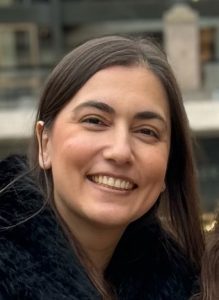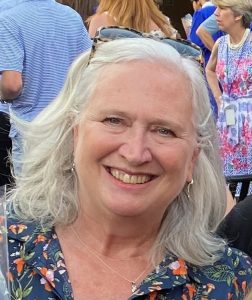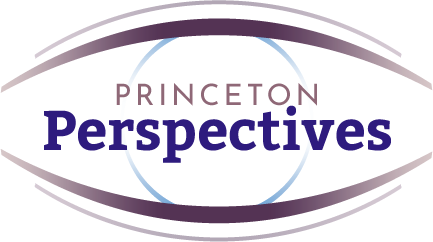 Discussions about Diversity, Equity and Inclusion (DEI) education have gained national attention recently, and they have similarly been the basis of conversations in online discussion groups, at schools and more here in Princeton. Last month, two residents stood outside Princeton Middle School protesting the HiTOPS curriculum taught within its Pathways to Racial Literacy course. The reaction from people that both agreed with and disagreed with the protestors has been strong.
Discussions about Diversity, Equity and Inclusion (DEI) education have gained national attention recently, and they have similarly been the basis of conversations in online discussion groups, at schools and more here in Princeton. Last month, two residents stood outside Princeton Middle School protesting the HiTOPS curriculum taught within its Pathways to Racial Literacy course. The reaction from people that both agreed with and disagreed with the protestors has been strong.
Within the Princeton Public Schools (PPS) curriculum (inclusive of the HiTOPS one) there are lessons and terms that some feel must be addressed, while others feel they must be adapted or removed. Princeton Perspectives felt it important to share what some around Princeton are feeling and reached out to numerous members of our community. It turned out to be incredibly hard to get this together as both those that support what is happening at PPS and those that don’t were hesitant to share. Why? Public conversations have become contentious, but that is even more reason why sharing some community thoughts can help move the conversation forward. Though not intended to be inclusive of all the nuances, we were able to get thoughts from two community members. We hope that bringing their perspectives to our readers will enable you to consider what they are sharing and come to your own conclusions. (The interviews, presented as a conversation, took place by phone with Kathy and via email with Rita.)
Lisa: How do you define Diversity, Equity and Inclusion (DEI) curriculum’s focus in K-12 education like at Princeton Public Schools? Board of Education President Dafna Kendal was quoted earlier this month in the Daily Princetonian as saying those protesting outside of PMS last month, questioning some of PPS’ DEI content, represent “a very small minority of our community,” and others have agreed. Is conversation about DEI a non-issue in Princeton or is it something that needs to be discussed?
Kathy: I think it’s basically educating students, and wherever it’s being offered, in corporations or other places, to understand other perspectives. And to really understand there are certain disadvantages that exist today in terms of race, gender, color, sexual identity and sexual preference. I think it is critical people get that kind of education. I would say that Princeton has been a very progressive town for many years, so it’s been somewhat of an eye opener for many in our community to hear strong opinions that disagree with issues such as DEI education. While I think the DEI protests do indicate a minority in our community, it’s something that needs to be discussed. If there are people raising the issue, then it’s something our community needs to grapple with.
Rita: Before replying to how DEI is defined at PPS, I’d like to share my definition. Like many people, I define DEI the way Bill Ackman described it in his recent tweet: “I have always believed that diversity is an important feature of a successful organization, but by diversity I mean diversity in its broadest form: diversity of viewpoints, politics, ethnicity, race, age, religion, experience, socioeconomic background, sexual identify, gender, one’s upbringing, and more.” Over the past few years, like Bill, I’ve learned that contrary to what I thought it was, “DEI was not about diversity in its purest form. Rather, DEI was a political advocacy movement on behalf of certain groups that are deemed oppressed under DEI’s own methodology. Under DEI, one’s degree of oppression is determined based upon where one resides on a so-called intersectional pyramid of oppression where whites, Jews, and Asians are deemed oppressors, and a subset of people of color, LGBTQ people, and/or women are deemed to be oppressed.” How do you or I know which definition of DEI is applied at PPS? The answer becomes obvious when reading curriculum plans at PPS online, or after reviewing the HiTOPS training material. The PPS DEI definition is the latter one.
Many PPS parents like me assumed that we would see the benign flavor of DEI that Bill described, but we got the opposite version, which somehow emerged as mainstream at many college campuses and progressive towns. Which definition of DEI is best at PPS, and who has the authority to make this decision? The biggest issue I personally have with how our district arrived at their definition, including hiring HiTOPS to teach their curriculum at our public schools, is that parents were not consulted.
I often hear people say that the curriculum is mandated by the state. That’s not exactly true, and it’s important to acknowledge. At the state level, NJ established guidelines about what students are required to be taught; however, intersectionality education – which includes the privilege and oppression terminology – is not mandated by the state. Yet, our district locally mandated this education through required courses.
Defending PPS’s flavor of DEI education at PPS as state-mandated is false because PPS could have created different education materials and still met state mandates. It’s also important to acknowledge state guidelines leave much for interpretation by individual school districts, they are rarely prescriptive. PPS BOE or school administrators who downplay parents that disagree with PPS’s DEI education as a “vocal minority” is dishonest because the district has not conducted reviews or surveys with students and parents about where our community stands. So, who is the vocal minority, really? It’s about time we came together as a community and have a conversation about what DEI means to us and how this translates into school curriculum.
Lisa: Subjects like math and English are taught in all schools across the country, yet DEI education is taught in some schools, in some states, but not in others. How do you explain this variability in a subject that Princeton Public Schools describes as mandated education?
Kathy: It is required to be taught in NJ and I would agree with any requirement that DEI be addressed in the schools, because I think that kids need to be aware of the commonalities and differences between them, and also learn how to respect each other, even when they are different. It’s important to emphasize DEI is about inclusion of people based on race, gender, sexual preference, sexual identity. The opponents far too often focus on the issue of sexual identity but there are many other differences between us that are important to discuss. I feel like we get caught up in the sex education issues, which are very important, but all of the aspects of DEI are important. All of the differences between us are what people need to be educated about and learn to respect.
Rita: I believe that most people recognize that there is inequality and injustice in our society and around the world, and many want to improve society for ourselves and for our children. What people forget to ask is: what does success look like, how do we get there, and how do we know that our efforts are yielding positive outcomes? DEI education, for the most part, turned into a political advocacy movement, gave rise to a very lucrative industry that is working hard to stay in business, and has divided our country. We’re experiencing this division in Princeton, in our school district, often at private schools, but instead of addressing this division through conversation and identifying common ground, school administration decides at the district level – without surveys or community input from a diverse group of people – what is right and everyone else is a vocal minority.
Lisa: Why do you feel that there has emerged public controversy over the teaching of DEI?
Kathy: I think it’s a political trend. Certainly nationally, DEI is being criticized and it is important to point out it’s a political issue. The Republican party has taken it upon themselves to make it a part of their agenda for the next election. I certainly think a lot of the criticism is based on either disagreement with the fact there’s any discrimination whatsoever, or based on misconceptions about what DEI is.
Rita: Such a public controversy emerged over the teaching of mainstream DEI because many people find the teachings themselves to be racist and forms of weapons. There have been countless instances of people weaponizing DEI teachings to attack opponents, and to discriminate against groups. For example: the lawsuit against Harvard by a group of Asian Americans, and the explosion of antisemitism on college campuses.
Lisa: Do you feel that any DEI education, like what is taught in Princeton Middle School’s Pathways to Racial Literacy course, is a necessary curriculum or needs to be addressed? What is positive and necessary? What is problematic and needs change?
Kathy: I am not as familiar with the curriculum, but it is important to have these discussions about respecting differences among us and learning about how those differences can advantage or disadvantage members of our community. Whether we like it or not, discrimination on the basis of these various identities is still very present in our society and to claim it’s not is to put your head in the sand.
Rita: Pathways to Racial Literacy focuses on surface-level traits. It also empowers and encourages students to believe that they have the authority and wisdom to judge and punish. Where does our confidence in the judgement abilities of teens and tweens come from, unless teachers are prescribing to them what to think? How do we know that these kids – whether they are self-aware of it or not – will not be using these skills as an excuse to bully their classmates? Why are we trying to turn our children into social justice warriors?
Lisa: Some of the public controversy has been over the HiTOPS curriculum, taught by an outside organization that defines itself as providing inclusive education. Opponents say the curriculum is divisive. What are your thoughts? Is Princeton a community that is open to having these conversations? Are you open to trying to understand other viewpoints?
Kathy: I am certainly open to hearing the other side, but I’m not quite sure how the curriculum is divisive. HiTOPs has been a large part of our community for many years, and their contribution is important. I do think there are groups who are advantaged in our society and others that are not. I don’t think that it’s harmful for people to understand the dynamics of what happens when some groups are more advantaged, have more power, than others. I can see how some people might not agree with language such as “oppressed and oppressor” but people need to learn more about why that language is used. I don’t disagree with the foundational basis of the HiTOPS curriculum.
Rita: If the HiTOPS curriculum was inclusive, then the organization and course material would have been shared and discussed broadly with a diverse group of parents before the course became mandated by our district, wouldn’t you agree? Likewise, parents are still waiting to receive the materials being used in the Pathways to Racial Literacy class, only the course plan has been made available to parents online.
There has been a lot of buzz about HiTOPS and as far as I’m aware, there is still no formal or reliable process of soliciting feedback by the school administration from parents or students. If feedback was welcome, one would think that there would have been a process in place already.
I personally have nothing against HiTOPS; they have been in our community for a very long time and some people find great comfort there – that’s wonderful. For me, the provider of the course material matters much less than how we arrived at the community division in the first place. All of discomfort could have been averted with a standard process that takes democratic community engagement seriously. There are multiple ways to learn about diversity and inclusion topics that cause a lot less controversy and division among people. Had school administration proceeded differently, we could have settled on some of them instead of a one-size fits all HiTOPS curriculum.
The question shouldn’t be whether I am open to other viewpoints, it’s whether our elected officials at the BOE and school administration will finally step out of their echo chamber to create space and air for constructive dialogue with students and parents who have diverse perspectives. After all, they were elected to represent the entire community.
Lisa: The first day protesting took place outside of Princeton Middle School about this curriculum prompted PPS Acting Superintendent to send an email to all PPS parents informing “counseling services will be available to any student in need of assistance today.” A similar message was not sent the day counter-protestors came. Is that sending a certain message?
Kathy: I think that the first protestors weren’t understanding how their message could be harmful. To many kids at this age, valuing who they are in terms of their sexual preference, sexual identity is really important, and this is the first environment they can start expressing that. As a strong supporter of HiTOPS. I disagree with the messages of those signs. The kids who do feel different in school may have felt hurt and possibly scared by those messages. Kids are very vulnerable at that age, and I don’t think they understand the political debate surrounding this issue.
Rita: It’s sending a message to students and the community that alternative points of view are forms of harassment and violence and will be punished by weapons of social justice.
Lisa: In HiTOPS’ curriculum as well as in other parts of the Pathways to Racial Literacy curriculum written by PPS there is the teaching of societal categories such as oppression and privilege. These seem to be at the core of the dissent to DEI, at least here in Princeton. What are your thoughts about these lessons being taught at PMS and other PPS schools? How do they seek to benefit students vs. could they cause harm?
Kathy: It’s important for students to understand the dynamics of power in our society and how there are certain groups that have more power than others whether they intend to or not. It does exist and people need to understand how that works, however they identify themselves as part of that dynamic. I don’t think it’s harmful for kids to understand they may be in a group that has more advantage, in fact it’s important they do understand that. Learning to see other perspectives entails you are aware of your own disadvantages or advantages. What people mean by oppression or being oppressed does not entail intent to harm someone else or oppress someone. I think it describes power dynamics that people don’t want to know sometimes because it is uncomfortable. But it’s important for us to have that kind of awareness as we move through our society. Kids are going to go to college and get jobs. These dynamics are present everywhere and it’s important for them to be introduced to the reality of how our society works.
Rita: The Privilege & Oppression Wheel in the HiTOPS training attempts to demonstrate – in brutally simplistic terms, and missing vital nuances – what HiTOPS training describes as “two sides of the identity coin: privilege and oppression”. Using personal characteristics such as gender, race, citizenship, body size, etc., the wheel invites middle schoolers to map themselves into the category of “oppressed, less oppressed, and privileged”. What if the middle schooler is multi-racial, Jewish white-presenting or non-white presenting, dresses in ethnic or clothes that identify their religion, if they have a speech impediment, if the student is white and according to the chart is “privileged” but experiences abuse or has secret thoughts of self-harm, or is unsure of their sexual orientation…how are they supposed to feel, and what is the net benefit of forcing students into these privilege circles?
I am a white-presenting Jewish cis woman who emigrated to the USA with nothing, to escape systemic antisemitism. Why should I and others identify me as white and privileged when historically Jews haven’t been treated as white people, and hate crimes against Jews in the US are higher than all other hate crimes combined? Is this what privilege feels like?
There is an article called “Ditching Diversity Myths“, written by Ryan Ruffaner and published in Quillette. It references studies and empirical evidence. In a nutshell, it says that team conflicts are rarely related to surface-level traits, “and if you call attention to it, you will simply reinforce surface-level divisions rather than creating deep-level harmony. To make your diverse teams work well together, simply allow them to engage in meaningful, interdependent tasks, and give them plenty of time to get to know each other on a deeper level.” DEI education at PPS focuses on differences rather than attempting to establish unity and harmony, and I do believe we will find that this education is causing harm. Diversity and inclusion topics should be taught differently.
 Rita Rafalovsky is a married mother of two children, and two now adult children. Before moving to Princeton in 2009, she lived in north Jersey and in Manhattan, and emigrated to the USA in 1988. Rita worked in corporate banking for 18 years. She and her husband and chose to live in Princeton to a large extent for the public schools, culture and liberal values. However, she feels Princeton has changed since COVID, and for the past two years her kids have been at a private school. They hope to send them to the Princeton High School, but says this decision hinges on the strength of academics and less of a politically-charged environment.
Rita Rafalovsky is a married mother of two children, and two now adult children. Before moving to Princeton in 2009, she lived in north Jersey and in Manhattan, and emigrated to the USA in 1988. Rita worked in corporate banking for 18 years. She and her husband and chose to live in Princeton to a large extent for the public schools, culture and liberal values. However, she feels Princeton has changed since COVID, and for the past two years her kids have been at a private school. They hope to send them to the Princeton High School, but says this decision hinges on the strength of academics and less of a politically-charged environment.
 Kathy Taylor has lived in Princeton for 23 years. She and her husband, Mark Boulding, raised three daughters who attended the Princeton Public Schools. She is a lawyer and bioethicist, and community volunteer most recently with the Eviction Prevention Team at Housing Initiatives of Princeton.
Kathy Taylor has lived in Princeton for 23 years. She and her husband, Mark Boulding, raised three daughters who attended the Princeton Public Schools. She is a lawyer and bioethicist, and community volunteer most recently with the Eviction Prevention Team at Housing Initiatives of Princeton.

 Ingredients:
Ingredients: Ingredients (4-5 servings)
Ingredients (4-5 servings)
 Ingredients:
Ingredients:
